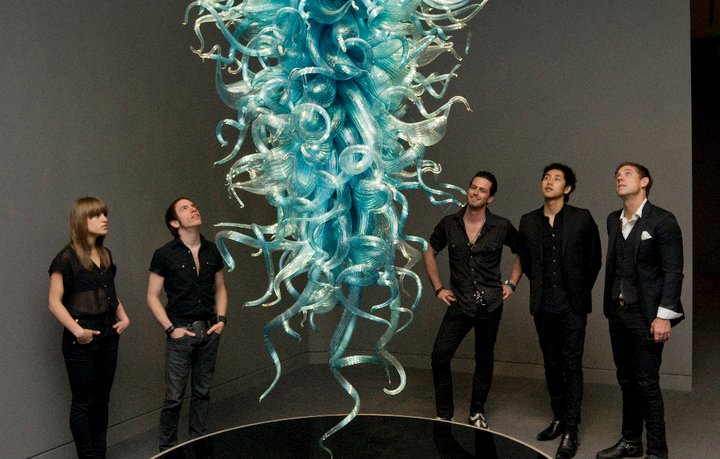Antitrust lawsuits in the United States had its historical beginnings with the Carnegie Steel and Standard Oil monopolies. The early 20th century was a time of trust-busting and a battle of government regulation of these industries, which were seemingly impossible to control due to their power through insurmountable wealth and market domination. Then, the 70s and 80s saw the trust busting of the Bell System in the sector of telephones and communication. Now, almost exactly a century after the passing of the antitrust laws and almost a half-century after the most recent conglomerate disaggregation, monopolies adjacent to the industry of telephone and communications run rampant in the United States – and the government is again facing difficulty in quelling their expansive power. This article will analyze three ongoing and one recently closed antitrust cases against Amazon, Apple, Alphabet, and Meta, and suggest effects that the rulings may have on how the nonprofit industry functions.
A Quick Roundup of January News & Social Media Updates
Facebook as an Acquisition Tool and Income Driver
News Roundup: Facebook Ads, Youtube Ads, Artists Database
News Roundup: Met Museum, Facebook Video, Google Chrome VR, and Wireless Power Transmission
Engaging Social Media Audiences Through Facebook Live
#TBT: The Arts Manager's Toolkit for Data Management
Here at AMT Lab, we have been sorting through plenty of data as we prepare for tomorrow’s release of the full report from our 2015 National Ticketing Survey (stay tuned!). Today’s throwback is a collection of AMT Lab Articles that discuss tools, stories and best practices for the management and usage of quantitative data in an arts organization. Most of these are a more recent throwback, but even those articles from 2012 still provide invaluable resources for organizational leaders.
Research Update #2: Best Practices of Facebook
Per Moz.com Facebook had reached unprecedented levels of popularity, with “1.19 billion monthly active users”, and over 750 million monthly mobile users. These figures underscore why Facebook is such an important communication channel for arts organizations. However, different organizations will have different objectives when managing their Facebook pages. I covered some general best practices in my first research update, but channel specific best practices also exist. To demonstrate how tactics might differ between organizations, I will us three museums: The Met, the Warhol, and Tate to provide specific examples.
Frustrated by Managing Multiple Social Media Channels? Buffer It!
Make It Look Good: The Value of Visual
Did Black Friday Shopping Kill Social Media Advertising?
“Marketers looking to get more the most bang for their buck with […] advertising might skip social media altogether” – Lauren Gores (Mashable)
The words stopped my social media manager heart cold – Facebook barely contributed anything to Black Friday sales and I can already hear the complaints now: Black Friday is the biggest shopping day of the year. Everyone goes shopping on Black Friday. Everyone advertises on Facebook. If Everyone didn’t use Facebook to make purchasing decisions on Black Friday THEY NEVER WILL and we might as well give up now.
I could hear hypothetical red buttons being pushed as non-profits all over the country shut down their social media outreach. I was panicking. But were my fears entirely founded? Could non-profit organizations have a profit-driven relationship with social media, or is it strictly for community engagement?
This matter is irrelevant if non-profits are not using social media. Fortunately, the 2012 Nonprofit Social Network Benchmark Report indicates that nonprofits are extremely present on social media. Ninety-eight percent of the nonprofits surveyed reported they had a presence on Facebook, and 72% maintained a presence on Twitter. This is especially impressive when you consider only 66% of American adults online use Facebook (Brenner) and only 15% of online adults utilize Twitter (Smith). Additionally, nonprofits manage an average of 2.9 pages on Facebook and 1.43 accounts on Twitter (“2012 Nonprofit Social Network Benchmark Report”).
Why are these organizations so aggressively creating spaces for themselves in these realms? The organizations themselves identified marketing and fundraising as the top two purposes for maintaining a social media presence (“2012 Nonprofit Social Network Benchmark Report”). These purposes are separate and not equal, however, as 93% identified marketing as a purpose while only 55% identified fundraising. Most reported that the responsibility for their social media pages fell to the Marketing department in 2012. This was a departure from every previous year, when the task fell to Communications. It is pretty clear that nonprofits feel their social media presences are vital marketing tools in a digital age.
Of course, I should return to the original question – should we panic at the concept of using social media to hawk one’s wares because mega retailers couldn’t hack it on Black Friday? Maybe. IBM reported that Facebook generated only 0.68% of online sales on Black Friday – less than last year’s Black Friday and actually much less than the sales generated on the Friday the week before (a whooping 0.82%) (“IBM 2012 Holiday Benchmark Reports”). Twitter contributed a grand total of 0% of the revenue – that’s not rounding down. That’s just a 0. Additionally, the IBM report also notes that the conversion rate of shoppers was only 4.58%, meaning that less than 5% of Americans who visited a webpage actually purchased anything on Black Friday.
Before anyone actually gives up hope for internet commerce, let’s consider these mysterious Black Friday shoppers. Marketers would have you believe it is Everyone who shops on Black Friday, as a matter of American tradition. This falls a bit short of the truth. A Gallup poll conducted before the actual day shows that only 18% of respondents planned to do any shopping on Black Friday (Newport). The majority of these respondents, 95%, listed the good sales/cheap prices as an “important reason” for their decision to shop on Black Friday. This is consistent with such a low conversion rate – potential shoppers visited webpages to search for deals and if they could not find them, simply left. So the idea of social media advertising being a failure is less true than it first appears: only a small percentage of Americans shop on Black Friday, most who visit a webpage do not purchase anything, so social media could not play a huge role in these sales because there was no huge role for it to fill. Additionally, as a Mashable article on the story pointed out, social ads “are a part of a larger strategy” that move people off their computer and into stores (Mashable).
Which brings me back to the question of whether or not social media should be used to sell things. The non-profits arts community has been considering this question recently as well. The past National Arts Marketing Project Conference (NAMPC) featured a panel on the subject. “Meet Your Customers Where They Live: How to Harness the Sales Power of Facebook” generated a lot of buzz on Twitter as attendees livetweeted the core messages of the panel. Twitter user Katy Peace (@katymatic) suggested the panel “has finally made a compelling case for this FB ticketing app.” Nella Vera (@spinstripes) quoted panelist Lisa Middleton in her tweet, “Lisa Middleton: FB sales for arts will succeed for same reason it failed for other retailers. Buying tix to cultural event is SOCIAL. #NAMPC”. Reinforcing the social element, Facebook profile pictures appear in the seat the user has purchased, creating a holistic, engaging experience.
“Tickets purchased on Facebook show Facebook profile pics in the seats purchased by that person. Brilliant. #NAMPC” - @ASC_CathyB
For me, that’s the rub. Social networks are called “social” for a reason. Social media marketing creates engaged online communities, and engaged communities will support a nonprofit. Only one third of the nonprofits who use Facebook to fundraise utilize individual giving (“2012 Nonprofit Social Network Benchmark Report”). I think there is a real missed opportunity for non-profits to use social media as something more than marketing, and it lies with the few people who are willing to shop on Black Friday.
There is an interesting correlation between the users of social media and Black Friday shoppers. The largest group of respondents (34%) who indicated they would go shopping was ages 18 to 29 (Newport). Social media usage tends to skew towards younger users as well; half of Facebook and Twitter users fall between the ages of 18 and 35 (49% and 60% respectively) (Hampton). These users fall within the age range of the Millennial generation. Millennials know what they want and are interested in advancing a nonprofit’s mission. The majority (55%) prefer to learn about a non-profit organization through social media and even more (67%) have interacted with a non-profit on Facebook (“The Millennial Impact Report 2012”). Millennials prefer to give donations to non-profits, and an incredible 75% of them gave a financial gift to an organization in 2011.
In theory, this seems like a perfect recipe for success. We have a large population (the Millennials), who likes giving to organizations, and we know how/where they would like to send their contribution. And yet, only about half of non-profits actually fundraise on social media and these efforts are coming from Marketing, not the Development department (“2012 Nonprofit Social Network Benchmark Report”). Where’s the disconnect happening?
Perhaps it correlates to the size of the gifts: Millennials tend to give less than $100 to any single organization (“The Millennial Impact Report 2012”). Many small non-profits may not have the time or resources to invest in cultivating such small gifts. These organizations have to consider the future investment of these individuals, however. Seventy percent of Millennials did give online last year, they prefer to give online, and that probably won’t change any time soon.
At this time, a profit-driven approach to social media is still a fringe idea within the non-profit world. There are options for organizations who want to be on the cutting edge, like ticket sales and fundraising through social media platforms. These ideas, while nascent, have been used to a degree of success by the organizations brave enough to adopt them. For the rest of the non-profit community, utilizing social media as a marketing tool is still a good strategy. And, while it’s disheartening that social media contributed so very little to Black Friday sales, it probably is not relevant.
The Importance of Operating a Social Media Campaign
While readers of Technology in the Arts are likely active participants in social media and early adopters of all technology, the following guest post provides additional fodder for those still convincing their organization's leaders that social media is a necessary step for the organization. Guest Correspondent: Eric Taylor
Eric Taylor is a business developer and a writer for the Facebook ad campaign tool Qwaya, which focuses on building tools for social media marketing. Qwaya provides information, tools and up-to-date news about Facebook marketing strategies. The site aims to build a sophisticated tool with powerful features that are user-friendly and affordable for online advertisers and marketers world wide.
Social Media Campaign Opportunities
Have you considered creating a Facebook page yet? If not, you may already be behind the 8-ball in terms of brand awareness. The majority of new businesses today are focusing intently on social media marketing, and practically every popular brand across the globe has some sort of online presence.
There is a lot to gain from starting a social media campaign. Sure, a business or organization might be able to achieve success without developing an online social presence, but with the lay of the land today, there is really no reason to risk it.
Unless you reside under a rock or live in an area with total Internet blackout, you already know just how prevalent social media is in today’s culture. To not develop a campaign and an online presence would simply be foolish in your part.
Why Marketing in Social Media is a Must-Do
Constructing Channels of Communication
No matter at which point in history a business rose to prominence, communication has always played a role in the success. With social media, the options of communication are vast. Especially for those working with visual products, social media has opened an entire new way of communicating.
Take Brooklyn Museum for instance. Via their Facebook page, art enthusiasts around the globe can follow the production of exhibitions, watch videos and follow peoples’ discussion about the museum. This “content” is not just great for the fans, but also serves as a marketing channel.
Facebook as a marketing channel can be honed to an extremely narrow scope, communicating specifically with those more likely to purchase from your business, or you can use your social channels to carry out broad communication to boost your brand’s presence. Or both.
Using social media sites enables you to easily open up multiple channels of communication.
Keeping Your Base Satisfied
Not everyone who sees your updates will become a customer, but you can make people interested in what you do by consistently delivering high-quality material at a frequent rate. This ensures that your visitors are more likely to become fans, and that fans are more likely to become customers.
By using social media to communicate with customers and to operate an open, honest campaign, you’re also turning customers into long-term repeat customers. Your brand becomes interactive, and instead of acting as just a logo or a name behind a product or service, you put an authentic face to the business. This creates satisfaction across the board.
High Return on Investment
There are a few reasons why operating a successful social media campaign will offer you a higher return on your investment. First and foremost, you have to understand that you’re not investing nearly as much. Keeping up a social presence doesn’t cost a lot. You’re mostly investing your staff time with no advertising dollars spent.
Then there’s the fact that social media engagement rates are through the roof in 2012, especially on Facebook and specifically with quality content created with the target audience in mind. Fans and customers see more personality in the material and thus they’re more likely to click-through, sign-up, purchase, and most importantly, they’re more inclined to keep returning.
But engagement is even more important for businesses that are not (only) in it to make money. While, many traditional corporations still see most revenue from TV, billboards, magazines and other unsocial advertising formats.
For organizations with a mission, social marketing can be their biggest advertising format. Let’s look at Brooklyn Museum again.
Brooklyn Museum’s social fan base:
- Facebook: 71,000 fans
- Twitter:386,000 followers
- Instagram: 36,000 followers
So if the Museum would like to communicate something, they will instantly reach hundreds of thousands – people who have chosen to follow the museum online. In other words, they’re not random people but the perfect target group for social advertising.
These social-media efforts certainly help the campaign of getting people to donate money, which is presented in a Youtube video and is the first thing you see when entering the website. Getting this reach and these results through traditional marketing would be too expensive for a lot of businesses and organizations, especially when the fan base has very specific interests and is scattered all over the world.
If you haven’t started a social media campaign yet, whatever type of business you’re operating, there’s no better time than now to get started. You might not take off and become the most popular brand out there, but a light yet strategic social presence is better than no social presence.
Playing by the Rules: Creating a Social Media Plan
Your organization has been using social media for some time now. But does the staff know all rules? How to handle and respond appropriately to 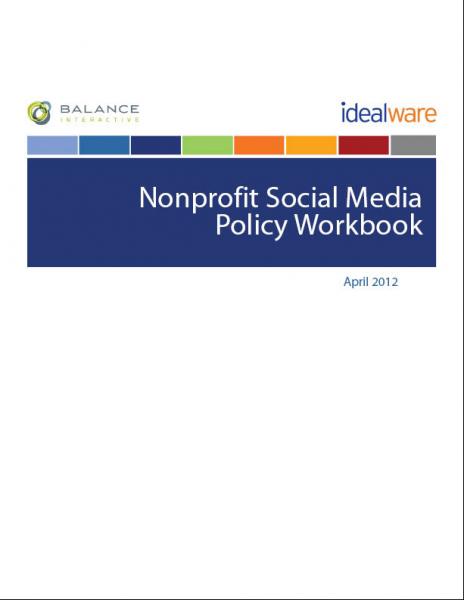 negative comments and criticism? What they can and not write on the organization’s page? How to fix errors in posts without compromising the integrity of the content the public has already shared on that post? Are employees allowed to “friend” your organization using their personal accounts? How do you ensure your brand image is enhanced, not threatened by social media usage throughout the organization?
A comprehensive, widely-circulated social media plan can eradicate these issues and guarantee all employees understand the procedures, policies, rules, and expectations for using social media to promote the organization’s brand.
negative comments and criticism? What they can and not write on the organization’s page? How to fix errors in posts without compromising the integrity of the content the public has already shared on that post? Are employees allowed to “friend” your organization using their personal accounts? How do you ensure your brand image is enhanced, not threatened by social media usage throughout the organization?
A comprehensive, widely-circulated social media plan can eradicate these issues and guarantee all employees understand the procedures, policies, rules, and expectations for using social media to promote the organization’s brand.
A good social media policy will provide clear guidelines as to what staff should and shouldn’t do when posting and interacting with the community on a day-to-day basis, freeing them up to think more strategically. It’s also likely to help leadership feel more comfortable with the less-formal nature of social media by letting them establish boundaries for its use. -- from the Nonprofit Social Media Policy Workbook
If you do not have a social media plan, you are surely not alone. However, given this year’s projected estimate that Facebook will exceed 1 billion users and Twitter, 500 million, it’s time to protect what this SIZEABLE population has access to- your brand, your image, and your Facebook wall.
Above all, a social media plan is a LIVING document. As your organization experiments with trending social media platforms, faces new challenges, expands its presence online, or changes its online branding, the social media plan must reflect that growth. Below are guidelines, best practices, and resources to help you clearly define your social media objectives and policies in a complete and effective social media plan. And to clarify, an effective social media plan is not one that controls and restricts participation, rather, facilitates and encourages an open relationship with the public. I’m talkin' 24/7 PR.
1) Meet your new best friend: The Nonprofit Social Media Policy Workbook April 2012 (scroll down the page and click "Download the Report"). Download it. Swear by it. Love it. Be best friends with it forever. Thank you, idealware and Balance Interactive.
2) Determine if your social media plan will address policies for internal social media use (expectations for employee-to-employee use), procedures regarding proper usage and maintenance for PR purposes, and/or community guidelines for participation.
3) Facebook, Twitter and Linkedin are the Big 3. If your organization employs one or all of these, be certain the plan includes specific guidelines for each platform.
4) Video blogs, written blogs, podcasts, wikis, community forums, and on and on and on…these need to be considered as well. Perhaps the plan is not as developed for these various platforms, but nonetheless, expectations for their usage should be made clear if your organization/brand is the subject.
5) RESIST THE INCREASINGLY ATTRACTIVE URGE TO COPY AND PASTE YOUR PLAN, especially when you realize your organization not only uses the Big 3, but also has a YouTube, Pinterest, Tumblr, and Wordpress account…
As Chris Boudreaux, a social media consultant said:
What is important are the differences that are unique to your particular organization and circumstances, and should be based on your business outcomes and how you conduct your business. Just don't copy everyone else's policy and put it in your database of procedures.
6) TRANSPARENCY. How public are we talking? Will the entire world have access to this document (like the Smithsonian Institution and NPR have done), just your Facebook community (as AARP has done in its "Company Information" section), or will it be an internal document for office staff only? Knowing who will receive this information will determine the language you use and the direction you take with it.
7) R egardless of how public the document will be to the outside world- INTEGRATE IT. It should not be considered an isolated document. I’m going to be bold and take a wild guess that at least ONE person on your staff has a personal Facebook account, just one…Your organization's social media users need to know what is considered appropriate and inappropriate to say in reference of the organization, what copyright issues they may face when posting photos, when they can post things that are “off message” and who can friend whom. The social media plan should be included in the organization’s employee handbook- HR and the legal departments should be involved in making this document come to life, too.
egardless of how public the document will be to the outside world- INTEGRATE IT. It should not be considered an isolated document. I’m going to be bold and take a wild guess that at least ONE person on your staff has a personal Facebook account, just one…Your organization's social media users need to know what is considered appropriate and inappropriate to say in reference of the organization, what copyright issues they may face when posting photos, when they can post things that are “off message” and who can friend whom. The social media plan should be included in the organization’s employee handbook- HR and the legal departments should be involved in making this document come to life, too.
8 ) What to say, what to say. The language you use should be clear, as this is a guide for staff and perhaps, the public. For a few examples on strong and clear language in a social media plan, check out this post from Nonprofit Tech 2.0’s blog.
9) Enjoy this cartoon/graphic by Rob Cottingham depicting the process of creating a social media plan.
10) Look at examples of social media policies (213 organizations listed here). Read social media plans that are inclusive of all social platforms. Read plans and guidelines that are specific to blogging or Pinterest. Browse plans of organizations of a similar size and much larger size, of a similar audience and larger audience, and of a similar or completely different mission. While copying and pasting their plan into your own template serves no one, referencing a model will make you aware of things you hadn’t considered, including policies you agree/disagree with and procedures you admire.
Let employees know what is expected of them regarding social media usage. Let the public know what the organization's expectations are for the social media pages themselves and for participation. Keep everyone in the loop, out of trouble, and participating-- with a social media plan.
Six Ways Arts Organizations Can Improve their Facebook Advertising
 Guest blogger Erik Gensler is the President of Capacity Interactive, a digital marketing consulting firm for arts organizations. This fall Capacity Interactive is hosting Digital Marketing Boot Camp for Arts Marketers, a 2-day conference October 25-26 in NYC. Conference topics include: Marketing the Arts with Video, Mobile Marketing, Writing for the Web, Online Fundraising, and the topic of this blog post: Facebook Marketing.
More information at http://www.dmbootcamp4arts.com
Guest blogger Erik Gensler is the President of Capacity Interactive, a digital marketing consulting firm for arts organizations. This fall Capacity Interactive is hosting Digital Marketing Boot Camp for Arts Marketers, a 2-day conference October 25-26 in NYC. Conference topics include: Marketing the Arts with Video, Mobile Marketing, Writing for the Web, Online Fundraising, and the topic of this blog post: Facebook Marketing.
More information at http://www.dmbootcamp4arts.com
I'm calling for a moratorium on boring Facebook ads for the arts. As arts marketers, we have amazing products to sell -- live arts that provide moving experiences to audiences every night. We have beautiful sets and costumes, sexy dancers, and attractive actors. But what do most performing arts Facebook ads look like?
Headline: Show I've Never Heard of
Stock Production Photo
Come see <Show I've never heard of> at< theater I like>.
Starts April 5th. Tickets start at $25.
Snooze. We could do much better. Here are six tips to improve your Facebook advertising.
1.) Set goals. Before you begin, set goals for your campaigns. These can include things native to Facebook like: drive sharing, build fan base, drive event RSVPs, drive video views, etc. or drive visits to our website. One campaign can’t do everything to pick two to three goals and focus. I tend to think you can be most successful driving the native Facebook functions such as sharing, video views, RSVPs, etc. These are the easiest to track on Facebook and what the new ad formats are designed to do. I've also ran many campaigns that take users off of Facebook to a website. As Facebook builds more advertising options to keep users on Facebook and track their interactions, I think there are more benefits to running those types of ads.
Then review your advertising reports often. You can see what is working and what is not. Pause and replace the duds. Also make sure to closely watch for frequency. If your average frequency for any ad approaches 10 then you need to replace it to fight fatigue.
2.) Highlight benefits, not features. I see far too many Facebook ads laden with features and with zero benefits. Features are much less interesting. Features would include: At xxx theater, performances begin 4/25, comfortable seats. They are useful, but benefits make far more compelling ad copy. Strong quotes provide great benefits. "The most brilliant ballerina of her generation" or "You don’t just see an Ailey performance, you feel it." Tell a story. Build excitement.
3.) Use imagery that captures attention and change it frequently. As I mentioned earlier, we have the benefits of beautiful sets, costumes, sexy dancers, and attractive actors. For our dance clients, the Facebook posts that get the most interaction are ones with shirtless men and dancers in super-human poses.
Have your designer alter the images so they capture attention. Try adding borders or bright background colors. Or try to crop out the image and put it on a white background so it pops.
Also, if you ever ran a good ad on Facebook, you know your click-through rate (CTR) lasts only a couple of days. The only way to keep your CTR high is to keep your images fresh. So create lots of ads and rotate them often.
4.) Tighten your language. Is the language as tight as can be and under 90 characters? If not, cut nonessential words. Keep sentences short. Use active voice. Posts with fewer than 250 characters see about 60% more engagement
5.) Micro Target. Facebook allows you to slice and dice your audience in many different ways. Say, for example, that you are promoting the musical White Christmas. Determine all of the potential audience groups: people who like classic movies, people with kids, people who like Irving Berlin or his contemporaries, people interested in musicals, people who like tap dancing, etc. Then create unique ads for each interest with headlines that will grab their attention. For people with kids the headline should be "Family Holiday Entertainment" for those who like tap dancing "A Tap Dancing Delight," etc. It is best to create at least two headlines for each interest group to start. The more versions the better.
6.) Take advantage of the new ad types. There are many types of ads you can run on Facebook. The two types of ads I think are most useful in selling performances are:
- Stories to build up your likes. This just shows the name of your organization and the name of a friend who likes it. Social ads, ones with the names of friends attached, get far more clicks than non social ads. Target these ads to friends of your current fans. Make sure to add the demographic targeting on top of these ads to target the type of audience you are after. For one client we only target college educated women over 30 since we know they purchase 80% of tickets.
- Page Post ads. These allow you to select a recent post and promote it as an ad. This is the only way to get videos into your ads without purchasing a premium sponsorship (which starts at $25,000). Just save your video on Facebook and create a post about it. Then go to the ad interface and select your organization as the target, choose "a specific post on your organization," then choose the story you want to promote from the dropdown. Voila, a video ad. The other advantage of these types of ads is that users can like, comment, and share the ad. When a user “shares” your ad, you get thousands of endorsed impressions. Also consider RSVP ads where you build an event on Facebook and the call to action is for users to RSVP.
Want to learn more about Facebook advertising? Don’t miss the half day session on Facebook Marketing at Digital Marketing Boot Camp for Arts Marketers, October 25-26 in NYC. More information at http://www.dmbootcamp4arts.com.
How much are you worth to Facebook?
 Now that Facebook is going public (reluctantly, due to a Federal Trade Commission rule) and is releasing financial statements we actually know how much money Facebook is making off of us: about $1.21 a quarter according to Techcrunch. This amounts to around $4.84 a year per user average. This figure is of course only part of Facebook's income portfolio as it makes money off of advertising, investments, and licensing. At times like these it is important to remember that Facebook is not ours, it is run for the profit of the shareholders. The dozen or so iterations of Facebook that have been implemented over the last eight years have all had modifications that were put in place to maximize data mining and advertising sales.
A worthwhile re-read at a time like this was done by a former blogger for this site. Here are links to Amelia Northrup's social media analytic series:
Now that Facebook is going public (reluctantly, due to a Federal Trade Commission rule) and is releasing financial statements we actually know how much money Facebook is making off of us: about $1.21 a quarter according to Techcrunch. This amounts to around $4.84 a year per user average. This figure is of course only part of Facebook's income portfolio as it makes money off of advertising, investments, and licensing. At times like these it is important to remember that Facebook is not ours, it is run for the profit of the shareholders. The dozen or so iterations of Facebook that have been implemented over the last eight years have all had modifications that were put in place to maximize data mining and advertising sales.
A worthwhile re-read at a time like this was done by a former blogger for this site. Here are links to Amelia Northrup's social media analytic series:
http://www.technologyinthearts.org/2011/05/the-art-of-social-media-analytics-part-1/
http://www.technologyinthearts.org/2011/06/the-art-of-social-media-part-2/
http://www.technologyinthearts.org/2011/06/the-art-of-social-media-analytics-part-3/
Motion-Capturing Conductors, Pianos & Landmines, and Facebook & Twitter Symbols
A roundup of my favorite applications of arts and technology this month:
1) Music and Gestures: Capturing the Movement of Conductors
In “The Maestro’s Mojo,” Daniel J. Wakin of the New York Times interviews Alan Gilbert, the music director of the New York Philharmonic. The article discusses the importance of the conductor's form, gesture, and physical presence during a concert, breaking down the essential components of each movement: right hand, left hand, face, back, lungs and brain.
What is most revealing, not to mention beautiful, is the motion-capture sequence and interactive demonstration of Gilbert’s movement and gestures while conducting. Even if you view the interview with the sound on mute, the digital simulation of Gilbert conducting is worth your time. Captured in this digital transformation is the grace, the lines and the precision of a conductor at work. The digital transformation is both a work of art in itself and a fascinating study of the movements that perhaps, so nuanced, evade even the most cultivated and experienced concertgoer.
[embed]http://www.http://vimeo.com/40095898[/embed]
2) Pianos and Landmines
Did you catch this story earlier in the month? It’s about Marian Bechtel, a 17-year-old finalist in the 2012 Intel Talent Search competition. Bechtel presented her invention of a low-cost minesweeper that uses sound waves to detect explosives. A pianist, Bechtel applied her knowledge and expertise on the logistics of sound wave travel in music, to that of determining the location of land mines. Though her minesweeper prototype did not win her first place in the competition, Bechtel’s inspirational and innovative discovery is one that spans the fields of science, engineering, technology, warfare, humanity, and music- the juxtaposition of melodic beauty and peace, with war and destruction.
[embed]http://www.youtube.com/watch?v=nGW2qAHLJCc[/embed]
3) Not about music, but some good news about Facebook and Twitter Logos!
And last but certainly not least, proof that those little, cute, perfectly-square Facebook and Twitter symbols DO, in fact, generate traffic to the organization’s respective pages. According to a study conducted by the global consulting firm, Accenture (shout out to Technology Planning and Implementation),
Accenture found that, in the U.S, about a third of TV viewers have liked a show’s or brand’s Facebook page or tweeted about what they saw on TV after seeing one of these logos.
This implies that a television viewer, if not using his/her computer at the time the advertisement is viewed, will "like" or visit an organization's Facebook or Twitter page after the fact. If that is the case, are the benefits of including the logos in your organization's e-mails and correspondences with patrons even greater? Furthermore, the study indicated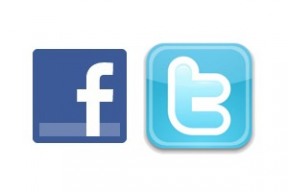
…11% of viewers scanned a QR code while watching TV.
Given what we know about QR code usage in the US, and its slow-to-catch-on-if-ever status, 11% is a surprisingly high number.
Moral of the story? Be sure to include those Facebook and Twitter symbols in every e-mail blast, online correspondence, and virtual newsletter. Your Facebook or Twitter presence is important. Inserting the logos in an e-mail is quick, free (monetarily) and according to what you probably already knew and is now confirmed by this study, a crowd-pleaser. People will click, Tweet, post, Retweet, and follow.
Cash Mobs
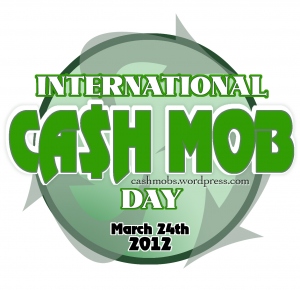 According to Public Radio International, the first Cash Mob was started by a writer and engineer from Buffalo called Chris Smith to counter the growing culture of discounting (couponing and deals from Living Social as well as other deal sites). Now in over a dozen cities in the United States and Canada Cash Mobs are getting significant media attention. Organized online, the suggested rules are relatively simple and are centered around the concept that the business must be a local one and that a non-discounted product must be purchased for $20 or more by each member of the cash mob.
According to Public Radio International, the first Cash Mob was started by a writer and engineer from Buffalo called Chris Smith to counter the growing culture of discounting (couponing and deals from Living Social as well as other deal sites). Now in over a dozen cities in the United States and Canada Cash Mobs are getting significant media attention. Organized online, the suggested rules are relatively simple and are centered around the concept that the business must be a local one and that a non-discounted product must be purchased for $20 or more by each member of the cash mob.
Cash mobs are most frequently organized through social media and can be found under the Twitter hashtag #cashmob or on Facebook under cashmob and your city. As of the international cash mob day last March 24th, 2012 Cash Mobs have been organized in 32 states and two Canadian provinces. Growth of this movement has been swift with new cities joining cash mob lists every week and is sometimes linked with a buy local campaign.
The goals of many of these cash mobs are to save a local business who's sales have been low. By all indications there has not yet been a cash mob for a theater or museum but it is only a matter of time. As cash mobs are supposed to be social activities they would be well suited for many arts settings. The social media context for these activities have made them extremely easy to measure metrics on as each cash mob elicits numerous check ins and photo posts. The incentive for participation in these activities is a sense of community support. Non-profit arts organizations are fundamentally community organizations ergo the arts should be obvious beneficiaries of this movement. If anyone knows of a successful cash mob for an arts organization, please comment with the results and links if possible!
How much should you trust your candidates for employment?
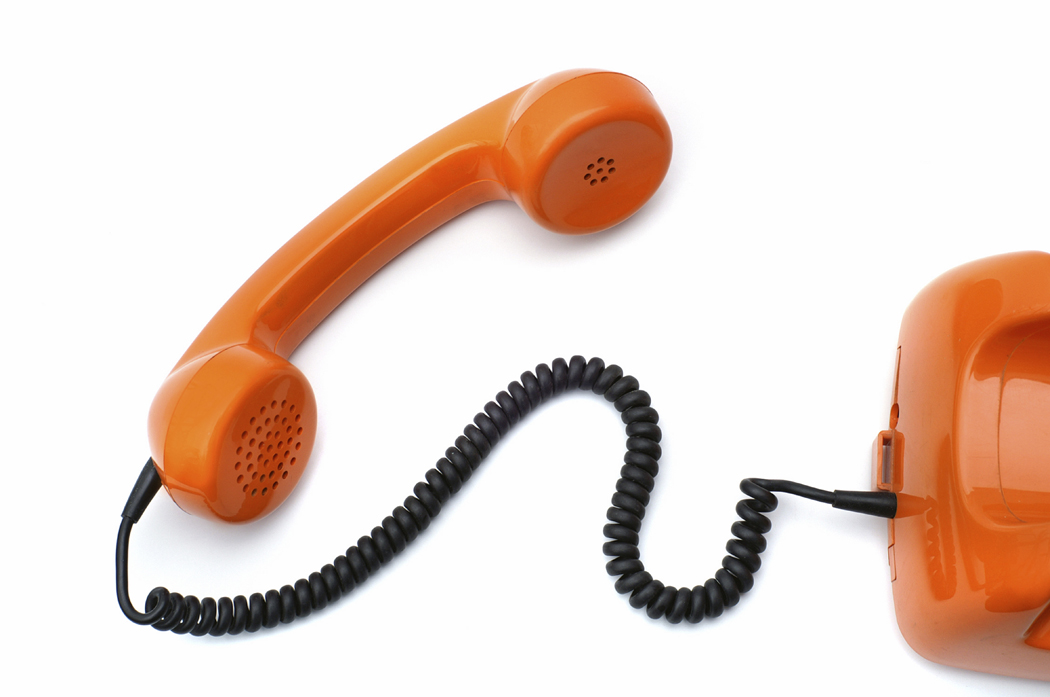 Verifying information on people online is cheaper and easier than it has ever been. So why is it then that so many arts organizations don't use this technology to vet new employees? The traditional method of calling a few references is relatively easy to foil and according to some studies up to 50% of all job applicants either outright lie on their applications or stretch the truth with regards to previous duties, length of employment, or reason for leaving (depending upon how you view lying). According to MSNBC as many as 80% of for profit firms use background checks on new employees today (up sharply from 30% in 1996). There were no figures available from the arts sector regarding this practice but anecdotal evidence indicates the numbers are much lower.
There are innumerable firms that offer electronic background check services for around $20 per verification (word search for background or pre-employment screening returns hundreds of firms). The service usually includes verification of education and employment as well as criminal records from local, state, and federal levels. For additional money you can also get credit checks and driving records. Studies have shown that employees that are under financial distress are multiple times more likely to steal from their employers and while that may not be an eliminating factor regarding hiring an employee it may help greatly to coincidentally bring in a credit councilor for an office wide employee training.
Verifying information on people online is cheaper and easier than it has ever been. So why is it then that so many arts organizations don't use this technology to vet new employees? The traditional method of calling a few references is relatively easy to foil and according to some studies up to 50% of all job applicants either outright lie on their applications or stretch the truth with regards to previous duties, length of employment, or reason for leaving (depending upon how you view lying). According to MSNBC as many as 80% of for profit firms use background checks on new employees today (up sharply from 30% in 1996). There were no figures available from the arts sector regarding this practice but anecdotal evidence indicates the numbers are much lower.
There are innumerable firms that offer electronic background check services for around $20 per verification (word search for background or pre-employment screening returns hundreds of firms). The service usually includes verification of education and employment as well as criminal records from local, state, and federal levels. For additional money you can also get credit checks and driving records. Studies have shown that employees that are under financial distress are multiple times more likely to steal from their employers and while that may not be an eliminating factor regarding hiring an employee it may help greatly to coincidentally bring in a credit councilor for an office wide employee training.
With funding competition at an all time high it is incumbent upon not-for-profit organizations to utilize every dollar as efficiently as possible. When it comes to hiring however, some organizations set aside analytic tools and rely on an ad hoc collection of old human resource practices and intuition.
Concerns of privacy and respect deter many hiring managers from running background check, but the truth is that prospective employees expect to be checked out in this day and age. Most prospective employees have already offered more personal information (although it is usually different in content) through their Facebook account than background screenings return in their findings. Indeed some corporate employers are actually asking for access to employees Facebook pages. While most would consider this a bit extreme it does raise a point: what employees of an organization do in their personal lives sometimes has great impact on the perception of a not-for-profit in the eyes of the public.
The extent to which the arts sector vets its employees is a matter of personal or institutional value. Even though these tools are available and inexpensive doesn't necessarily mean that it would make sense to each institution for every employee. Hiring managers need to ask themselves the questions: 1) What tasks do we need to be extra safe with regards to hiring for? Examples of this criteria include employees with keys to the building or safe or employees who have contact with children or vulnerable populations. 2) What degree of background check do we need? There are very extensive checks out there and not all data is truly useful for accomplishing the goals that realistically need to be attained. 3) What are our ethics with regards to what is private data and what is fair game? Issues that can come up with regards to this question get into the territory of medical conditions, personal relationships, sexual identity, and so on.
The key to tackling these issues is to talk about them. The ensuing dialogue within an organization will help define and address questions and define procedure. Books and consultants can also help codify procedure and answer legal questions. Consult an attorney for more information on the legality of asking for information from prospective employees.
Facebook, Alternative Bands and Acoustic Sessions @ the MFA
To me, this just about sums up the 21st century Millennial: Facebook invitations, exclusive access to acoustic sessions, alternative bands, 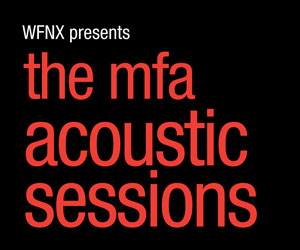 behind the scenes privileges, access granted only through social media and a little culture via the fine arts. To what pray tell could I be referring? Why, Boston’s Museum of Fine Arts’ (MFA) partnership with radio station WFNX, of course.
Since May 2011, the MFA Boston has been showcasing nationally acclaimed acoustic bands in its galleries. Each month, an alternative band and 35-50 lucky winners are selected to participate in the exclusive Acoustic Sessions series.
behind the scenes privileges, access granted only through social media and a little culture via the fine arts. To what pray tell could I be referring? Why, Boston’s Museum of Fine Arts’ (MFA) partnership with radio station WFNX, of course.
Since May 2011, the MFA Boston has been showcasing nationally acclaimed acoustic bands in its galleries. Each month, an alternative band and 35-50 lucky winners are selected to participate in the exclusive Acoustic Sessions series.
How does one get selected to attend? Here’s where the Millennial wins. The concerts are announced on the MFA’s Facebook page and live on WFNX Radio (tune in on 101.7 FM in the Boston area). Interested followers can submit an entry form on the MFA’s Facebook page or call in to the radio station to be selected.
How does it work? The MFA’s upcoming Acoustic Series concert on March 27th is advertised on its Facebook page in the following post:
The MFA and WFNX have teamed up to present some of the best alternative bands, live in the galleries and Kasabian plays next on March 27. You can only see them by “liking” us and entering to win tickets here or listening to WFNX.
According the program’s press release, the artists perform in various galleries- from the European Paintings to the Contemporary American Art room. Their performances are sound and video recorded. They are then shared online, both on the MFA’s Facebook page and WFNX’s webpage.
Just when you thought it couldn’t get any more Millennial friendly, the MFA throws in this added exclusive- the performing musicians’ participate in the Museum’s “Art We Love”
program. The musicians select their favorite work of art in the museum, explain why they chose it or its significance to them and are then photographed beside the work. The photographs are uploaded to the MFA’s Facebook page for all to enjoy
and explore, providing unique insight and exclusive information on the musicians.
It is a perfect example of how the collaboration between social media, the visual and the performing arts can enhance the public's artistic experience and engage even those difficult Millennials. Originally from the Boston area, I am proud to share the MFA’s innovative programming with those from away. But I am sure other museums and galleries are up to similar projects. What other museums and galleries have similar, or completely unique, social-media driven, collaborative programs?
Leading with Social Design at Facebook’s Analog Research Lab
“Everything just is,” says Christopher Cox, Vice President of Product at Facebook. Photos is an application for photos, Events is f or events, and Groups is for groups of people. Though many criticize Facebook’s interface and design as bland and uncreative, its designers at the Analog Research Lab test their ideas and design decisions in a highly informed way. According to a design mind article by Reena Jana, the Analog Research Lab is the company’s creative design space used to
or events, and Groups is for groups of people. Though many criticize Facebook’s interface and design as bland and uncreative, its designers at the Analog Research Lab test their ideas and design decisions in a highly informed way. According to a design mind article by Reena Jana, the Analog Research Lab is the company’s creative design space used to
...create branded marketing materials—T-shirts, for instance—for developer conferences and other Facebook events. It’s also where designers experiment with simple fonts and sleek iconography that will eventually influence what appears on the Facebook website.
I had never heard of Facebook’s Analog Research Lab. But its purpose, products and success reminded me of topics I have discussed in previous posts. For example, consider Facebook’s design decisions in light of Nina Simon’s The Participatory Museum. Facebook has certainly managed to promote a social experience that is accessible, meaningful and unique to each user, in large part due to the structure format and design elements the creative team at the Analog Research Lab develops.
Or consider artist Tanja Hollander’s most recent project, Are You Really My Friend? The Facebook Portrait Project, exploring the (d)evolution of human relationships as a result of our simultaneous existence in two worlds- the virtual and the real. At the Lab, designers are on a mission to make virtual interactions between individuals less cyber and more real.
The Analog Research Lab is not staffed with full-time employees. Instead, it serves as a space for Facebook designers to express the company and the brand using tools and techniques that are, get this, non-digital. The lab is stocked with a printing press, wood cutting tools, ink, a dark room for developing photos, drying space, etc. It encourages designers to focus purely on design, design techniques, and simpler, less complicated design strateg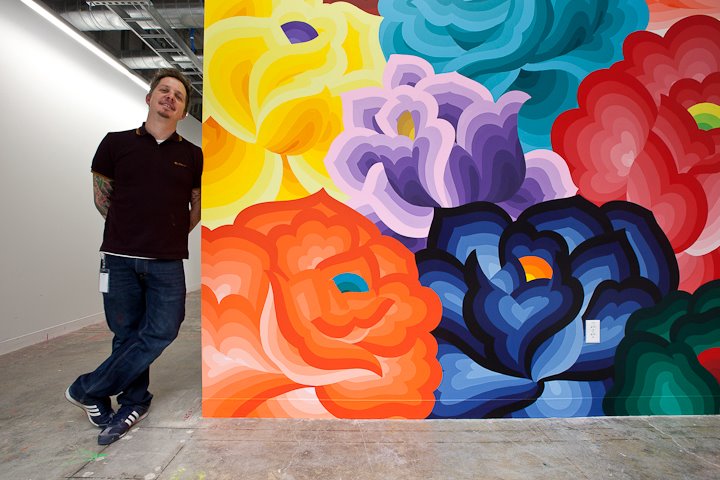 ies. True to its name, the Analog Research Lab is also a design research space. Colors, fonts, styles, shapes, etc. are tested on real people to gauge their future success and popularity online. The designers also use the space to make motivational, quirky screenprinted posters. Lots of them. So. Cool.
ies. True to its name, the Analog Research Lab is also a design research space. Colors, fonts, styles, shapes, etc. are tested on real people to gauge their future success and popularity online. The designers also use the space to make motivational, quirky screenprinted posters. Lots of them. So. Cool.
The Lab also serves as the home of Facebook’s new Artist-in-Residency program, a project to create, support and install offline artwork in Facebook’s offices. The first artist, Jet Martinez, recently completed a large, colorful mural titled “Bouquet” to beautify the walls of Building 17, where the company’s engineers work their magic.
Facebook’s offline and online design decisions aim to support human-to human interactions. This may come as a surprise, especially in light of the charged sociological and anthropological discussions that social media has forever affected (for the worse) humans’ ability to interact, engage and relate to one another in the physical world. Facebook’s creative leadership, including Cox, Ben Barry and Everett Katigbak, are committed to the design approach of “social design.” Updates to Facebook’s features, product development and design are made in response to users and their online behavior. Jana explains this approach as one that
…improves how people build human-to-human, versus human-to-interface, connections online.
Take for example one of the Lab’s stationary products- postcards printed with the word “Poke” in red letters. The design is in obvious reference to the virtual action of “poking” a friend on Facebook. To support the human-to-human connection, designers in the Lab created printed postcards, with non-digital design tools, for Facebook employees to write hand-written messages to send through good old fashioned, snail mail. The creative work done in the Lab explores the overlap and divide between cyber and physical interactions- translating Facebook's interactiveness in the digital realm to a tangible reality in our inhabitable space.
It is a neat space- the perfect dichotomy of trendy, vintage workshop and hip, old-school office. I am always curious to see how technology companies incorporate offline art and celebrate non-digital artists in their physical space, if they even do so. Are there other technology companies with similar artistic, in-house projects like Facebook's Artists-in-Residency program? Do technology or digital design companies have a responsibility to support non-digital and offline art? Are cyber users more attracted to online interfaces with simpler, non-digital design elements? Take a look at your own Facebook page. Think about the scaffolding, constraints and structured components that ironically, like Simon suggests, make self-expression so much easier and fluid.

















